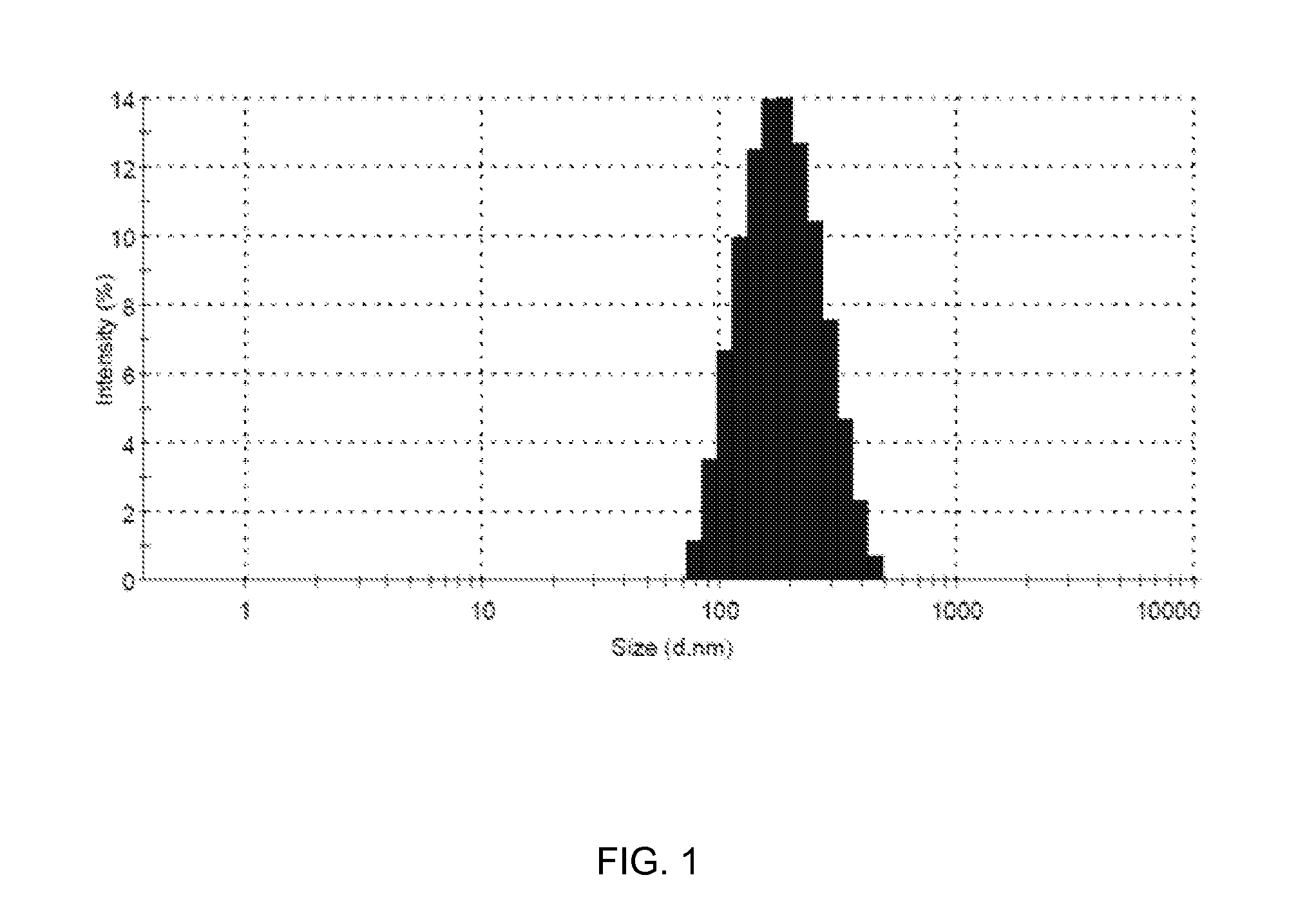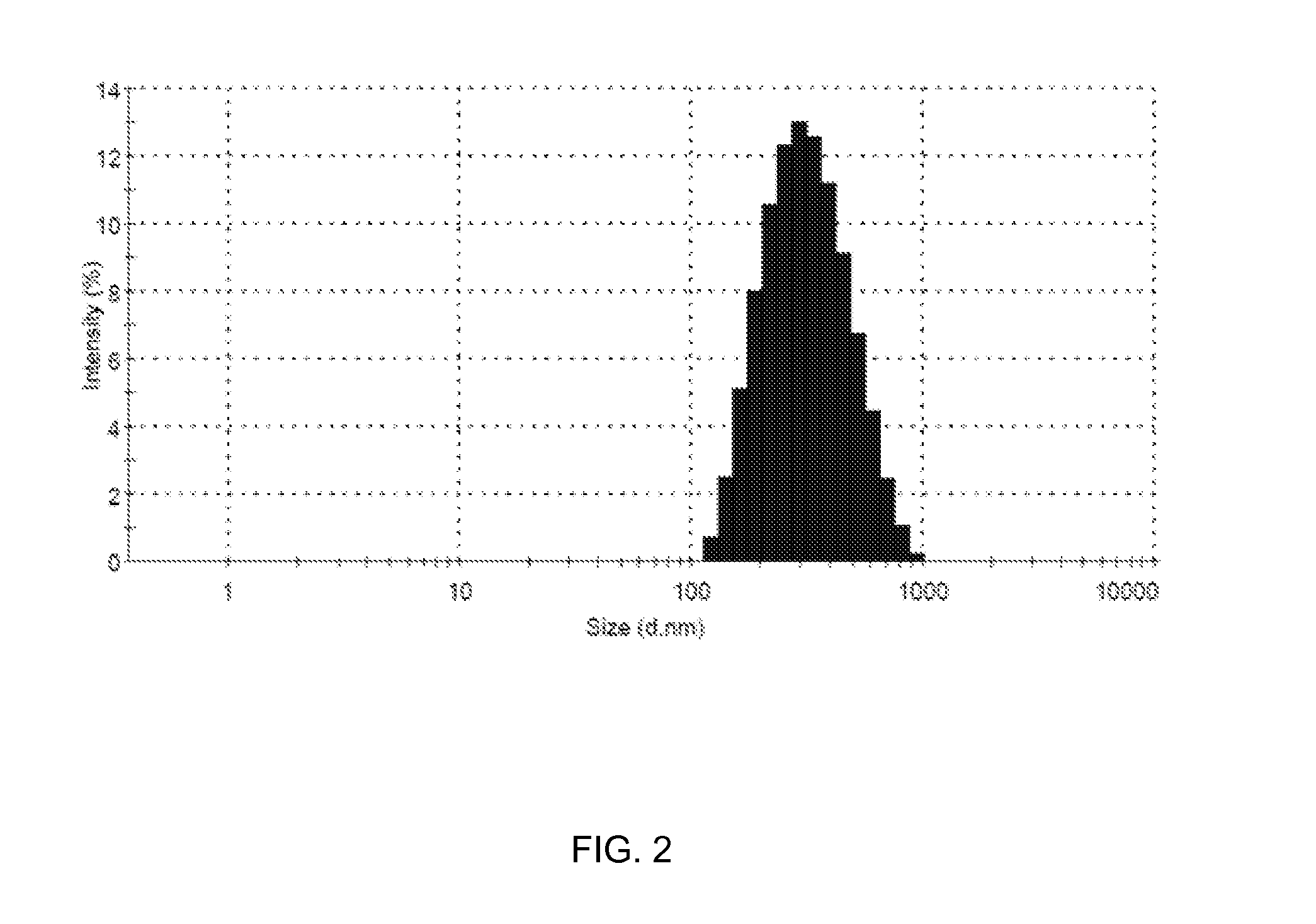Method and an insertable medical device for delivering one or more pro-healing agents to a target site within a blood vessel post-deployment of a stent
a technology of blood vessel and pro-healing agent, which is applied in the direction of medical devices, diaphragms, catheters, etc., can solve the problems of affecting the healing effect of the blood vessel
- Summary
- Abstract
- Description
- Claims
- Application Information
AI Technical Summary
Benefits of technology
Problems solved by technology
Method used
Image
Examples
example 1
Preparation of the Nano-Carriers
[0034]Lipoid E80 was obtained from Lipoid GMBH, Batch No.: 776114-1 / 906. 17β-Estradiol, Batch No.: 098K1372 was obtained from Sigma Aldrich (Germany). Water, other solvents and reagents used were of HPLC grade. A polyamide catheter system with COPAN Co-Polyamide dedicated angioplasty balloons for blood vessel bifurcation (hereinafter referred to as “the balloon system”) coated with Hydraflow® Hydrophilic coating (hereinafter referred to as “the hydrophilic surface”) was obtained from Minvasys, Paris, France.
[0035]Lipoid E80 (200 mg w / w) was dissolved in a minimum quantity of methanol, and HPLC grade water (20 ml) containing Tween80 (5 mg) was added to obtain an aqueous solution of Lipoid E80. The aqueous solution of Lipoid E80 (20 ml) was subjected to an ultrasonic homogenization for 20 to 25 minutes in an ice-cold water bath to obtain Solution A1. The Solution A1 thus obtained contained nano-particles of Lipoid E80. The solution A1 was subsequently a...
example 2
Preparation of the Drug Delivery System (the Balloon System)
[0039]The solution of the nano-carriers (5 ml) was fed into the reservoir of a coating machine. The balloons of the balloon system were mounted on a rotating mandrel of the coating machine one by one. Each balloon of the balloon system was exposed to an atomization nozzle of the coating machine separately. The balloon system was rotated at 5 to 40 rpm by rotating the mandrel and simultaneously the solution of nano-carriers was sprayed over the balloons at 0.5 to 4.0 psi inert gas pressure and in two oscillations. Thus, the balloons coated with the nano-carriers (hereinafter referred to as “the coated balloon system”) was obtained. The coated balloon system was then removed and checked under a high-resolution microscope for the coating surface smoothness and presence of any foreign particles.
[0040]Various embodiments of the invention provide a method and an insertable medical device for improving healing of a blood vessel po...
PUM
 Login to View More
Login to View More Abstract
Description
Claims
Application Information
 Login to View More
Login to View More - R&D
- Intellectual Property
- Life Sciences
- Materials
- Tech Scout
- Unparalleled Data Quality
- Higher Quality Content
- 60% Fewer Hallucinations
Browse by: Latest US Patents, China's latest patents, Technical Efficacy Thesaurus, Application Domain, Technology Topic, Popular Technical Reports.
© 2025 PatSnap. All rights reserved.Legal|Privacy policy|Modern Slavery Act Transparency Statement|Sitemap|About US| Contact US: help@patsnap.com


